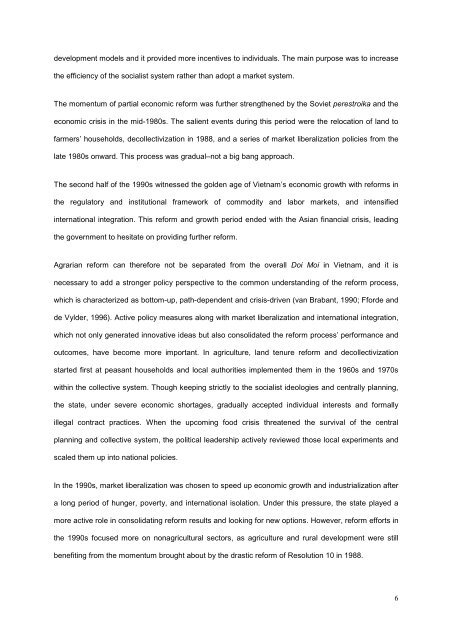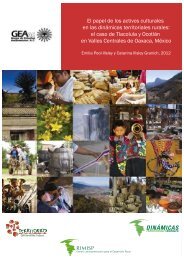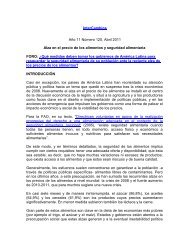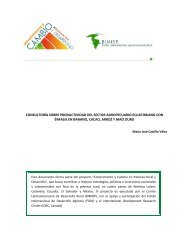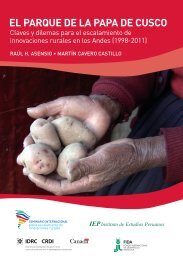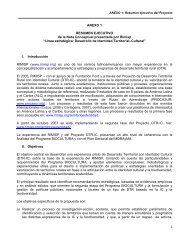Vietnam's Agrarian Reform, Rural Livelihood and Policy ... - Rimisp
Vietnam's Agrarian Reform, Rural Livelihood and Policy ... - Rimisp
Vietnam's Agrarian Reform, Rural Livelihood and Policy ... - Rimisp
Create successful ePaper yourself
Turn your PDF publications into a flip-book with our unique Google optimized e-Paper software.
development models <strong>and</strong> it provided more incentives to individuals. The main purpose was to increasethe efficiency of the socialist system rather than adopt a market system.The momentum of partial economic reform was further strengthened by the Soviet perestroika <strong>and</strong> theeconomic crisis in the mid-1980s. The salient events during this period were the relocation of l<strong>and</strong> tofarmers’ households, decollectivization in 1988, <strong>and</strong> a series of market liberalization policies from thelate 1980s onward. This process was gradual–not a big bang approach.The second half of the 1990s witnessed the golden age of Vietnam’s economic growth with reforms inthe regulatory <strong>and</strong> institutional framework of commodity <strong>and</strong> labor markets, <strong>and</strong> intensifiedinternational integration. This reform <strong>and</strong> growth period ended with the Asian financial crisis, leadingthe government to hesitate on providing further reform.<strong>Agrarian</strong> reform can therefore not be separated from the overall Doi Moi in Vietnam, <strong>and</strong> it isnecessary to add a stronger policy perspective to the common underst<strong>and</strong>ing of the reform process,which is characterized as bottom-up, path-dependent <strong>and</strong> crisis-driven (van Brabant, 1990; Fforde <strong>and</strong>de Vylder, 1996). Active policy measures along with market liberalization <strong>and</strong> international integration,which not only generated innovative ideas but also consolidated the reform process’ performance <strong>and</strong>outcomes, have become more important. In agriculture, l<strong>and</strong> tenure reform <strong>and</strong> decollectivizationstarted first at peasant households <strong>and</strong> local authorities implemented them in the 1960s <strong>and</strong> 1970swithin the collective system. Though keeping strictly to the socialist ideologies <strong>and</strong> centrally planning,the state, under severe economic shortages, gradually accepted individual interests <strong>and</strong> formallyillegal contract practices. When the upcoming food crisis threatened the survival of the centralplanning <strong>and</strong> collective system, the political leadership actively reviewed those local experiments <strong>and</strong>scaled them up into national policies.In the 1990s, market liberalization was chosen to speed up economic growth <strong>and</strong> industrialization aftera long period of hunger, poverty, <strong>and</strong> international isolation. Under this pressure, the state played amore active role in consolidating reform results <strong>and</strong> looking for new options. However, reform efforts inthe 1990s focused more on nonagricultural sectors, as agriculture <strong>and</strong> rural development were stillbenefiting from the momentum brought about by the drastic reform of Resolution 10 in 1988.6


